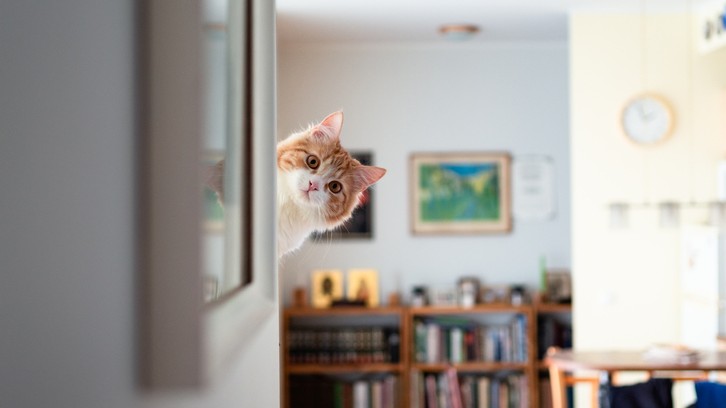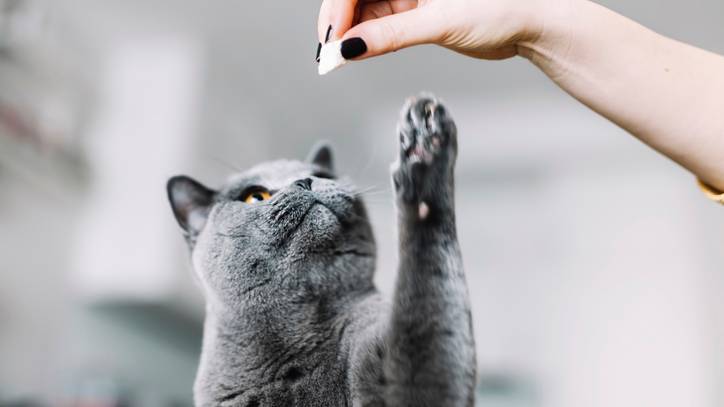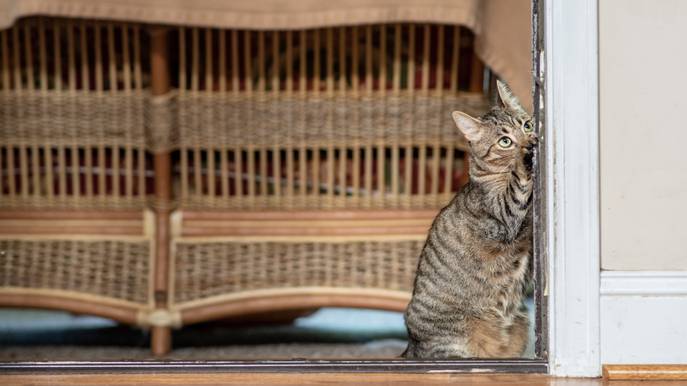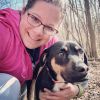Why does my cat scratch the wall?
Why does my cat scratch the wall? A vet shares five reasons for this behavior and how to stop it.

If you’re wondering, ‘Why does my cat scratch the wall?’, then you might be feeling a little bit frustrated. Decorating your home can be expensive, so the last thing you need is for your feline friend to damage the walls.
The bad news? You won’t be able to stop your cat from scratching altogether; this is essential for keeping their nails in good shape and expressing their emotions. The good news? You can redirect them to one of the best cat scratching posts instead of your furniture.
There are lots of other reasons why your cat might scratch, like marking their territory, acting on their instincts, or boredom. If you think it’s the latter, then they might benefit from more cat play using the best toys for indoor cats.
To help you put a stop to this behavior, we’ve asked vet Dr. Catherine Barnette for her expert advice. Below, she’s explained all the reasons why your kitty might be scratching, plus five ways to prevent them from doing it.
Why cats scratch walls and corners
There are several possible reasons that your cat may scratch the wall. Determining the cause of your individual cat’s scratching behavior may require a little bit of detective work, because your cat could be scratching at the walls for a single reason or because of any combination of reasons.
In general, reasons that cats may scratch at a wall or corner include:
Overgrown nails: Many cats keep their nails worn down through vigorous activity or the use of a scratching post. Additionally, cat owners often trim their cat’s nails to help maintain them at a healthy length. If your cat’s nails become overgrown, however, this can lead your cat to scratch at various surfaces in an attempt to file their nails to a more appropriate length.
Get the best advice, tips and top tech for your beloved Pets
Instinct: Scratching is an instinctive behavior for cats. While most cats would prefer to scratch on a surface with some resistance (such as a scratching post or carpet), some cats will scratch a smooth surface, such as a wall, if there is nothing else available.
Boredom: Cats are playful animals, with a strong prey drive. If they are not receiving adequate exercise or mental stimulation, they may begin scratching at the walls or demonstrating other unexpected behaviors as a result of boredom. In some cases, scratching at the walls may even become an attention-seeking behavior; if you give your cat attention for scratching the walls, they learn that this is an effective way to solicit interaction.
Marking territory: Cats often scratch at surfaces in order to mark their territory. Scratching not only leaves visible damage, it also leaves scent cues that can send a message to other cats.
Household pests: Cats have a strong sense of hearing. In some cases, they may hear mice or other pests within your walls. This can lead to unexpected scratching behavior, as their prey drive triggers them to try to get to the source of the sounds in the wall.
Understanding these common causes of scratching behavior is essential if you are trying to prevent your cat from scratching walls.
How to stop a cat scratching at the walls

1. Keep your cat’s nails trimmed to an appropriate length
One of the primary purposes of scratching is to help keep a cat’s nails in good condition. Regular nail trimming, using clippers designed for cats, can serve the same purpose. If you keep your cat’s nails suitably trimmed, this may make your cat feel less of a need to engage in inappropriate scratching behavior around the house.
Keeping your cat’s nails short will also offer an additional benefit; it will minimize the damage that occurs if and when your cat does occasionally scratch! While a cat with long, hooked nails can do significant damage when scratching your walls and furniture, a cat with short, trimmed nails is less likely to cause damage. We have written a complete guide on cat nail trimming.
2. Provide alternative scratching surfaces in your home
Scratching is a normal behavior for many cats, even if you do keep their nails properly trimmed. Therefore, it’s important to focus on providing desirable alternatives for safe scratching within your home. Different cats have different preferences for scratching materials, so it’s best to offer your cat a number of options and see what they prefer.
If your cat is primarily scratching your wall, it’s probably safe to assume that they will prefer a vertically mounted scratching surface. Try a typical scratching post, as well as adding a few wall-mounted scratching surfaces. Don’t stop at just vertical surfaces, though. Consider offering horizontal scratching surfaces to see if your cat enjoys those. Your goal is to offer your cat as many desirable scratching options as possible. The more options you can offer your cat, the less likely they are to prefer scratching your walls and furniture!
Cat Scratcher Mat
If you’re tired of your cat damaging your walls, this scratching pad will help. It’s super affordable, easy to mount, and contains catmint to attract your kitty.
3. Ensure that your cat is getting plenty of exercise and mental stimulation
Although scratching serves an important purpose in maintaining the nails, some cats also scratch because they are bored. If you have an active cat that is left alone much of the day while you are working, boredom could be playing a role in your cat’s inappropriate scratching behavior.
Ensure that your cat is getting plenty of mental and physical activity. The best cat toys will allow you to play interactively with your cat, including teaser wands and mouse toys. Schedule playtimes in the morning and evening, to help ensure that your cat is receiving consistent exercise on a predictable schedule.
Additionally, consider non-interactive play opportunities for your cat. Many vets recommend feeding some or all of your cat’s meals from a hunting feeder or the best cat puzzle feeder. These feeders are designed to transform mealtime from a passive activity to an active, engaging opportunity for exercise and mental stimulation. Simply feeding your cat from a hunting or puzzle feeder instead of a bowl can increase your cat’s opportunities for independent play.

4. Encourage alternative, more tolerable, ways for your cat to mark his territory in your home
Some cats scratch on surfaces as a means of marking their territory. This is especially likely to be the case in a multi-cat household or in a home where outdoor cats are visible to the indoor cat(s). Scratching not only leaves a visual signal to other cats, it also allows cats to deposit scent signals that are produced in the footpads.
With a bit of effort, you may be able to transition your cat from marking his territory through scratching to instead using bunting, in which the cat rubs his face on walls and objects within the home to deposit scent. Feliway Classic, a commercially available pheromone product, is made of the pheromones that are deposited during bunting. By using Feliway diffusers, sprays, and wipes around your home, you may be able to encourage your cat to mark by bunting instead of marking with his claws.
5. Rule out mice and other pests in your walls
While most inappropriate scratching can be remedied by better addressing your cat’s needs, there is one other possible cause of this behavior. Especially if you live in an older home or a rural area, it’s possible that your cat is reacting to mice or other pests in your walls. Consider consulting a pest control expert to determine whether this is a possible cause of your cat’s scratching behavior.
If you decide to use a do-it-yourself approach to a potential pest problem, take your cat into account. Conventional mouse traps should be avoided, because they could injure the paw of a curious cat. Rat poison should also be avoided, because it can be deadly to your cat if they ingest the poison or a mouse or rat that has ingested the poison. Instead, look for a pet-safe mouse trap, which can address a mouse problem with minimal risk to your cat.
What's the best way to stop a cat scratching the wall?

The question “why does my cat scratch the wall?” can have many possible answers. In some cases, there may be multiple factors at play. For example, your cat may have overgrown nails and may also be simultaneously suffering from boredom.
While it isn’t wrong to work your way through these interventions one at a time to see what works, consider a multi-pronged approach. By implementing regular nail trims, providing an increased number of desirable scratching surfaces, playing with your cat regularly, encouraging alternate marking strategies, and ruling out rodents simultaneously, you may be able to tackle your cat’s scratching issues sooner rather than later. This not only means less damage to your home and furniture, it also makes it less likely that your cat’s inappropriate scratching will turn into a long-term bad habit that is difficult to eliminate.
Stick around for some more answers to commonly asked kitty queries like how to stop a cat from eating plants and tell tale signs that your cat isn't getting what it needs to be happy. Plus, how to discipline a cat.

Dr. Barnette graduated from the University of Florida in 2006 where she received both her B.S. in Zoology and her Doctor of Veterinary Medicine (DVM). She has 15 years of clinical experience as a small animal veterinarian, treating dogs, cats, and occasional exotic patients. When she’s not writing content as a freelance veterinary writer, Dr. Barnette lives in southwest Florida with her husband and daughter (plus two cats, a dog, and a rescued dove!) and enjoys kayaking, biking, and hiking.
Dr. Barnette is a graduate of the University of Florida, where she received both her B.S. in Zoology and her Doctor of Veterinary Medicine (DVM). She has 15 years of clinical experience as a small animal veterinarian, treating dogs, cats, and occasional exotic patients. She now works as a freelance veterinary writer, creating educational content for veterinarians, veterinary team members, and dedicated pet owners. Dr. Barnette lives in southwest Florida with her husband and daughter (plus two cats, a dog, and a rescued dove!) and enjoys kayaking, biking, and hiking. Learn more about Dr. Barnette at www.linkedin.com/in/catherinebarnette.
- Megan MilsteadStaff Writer


